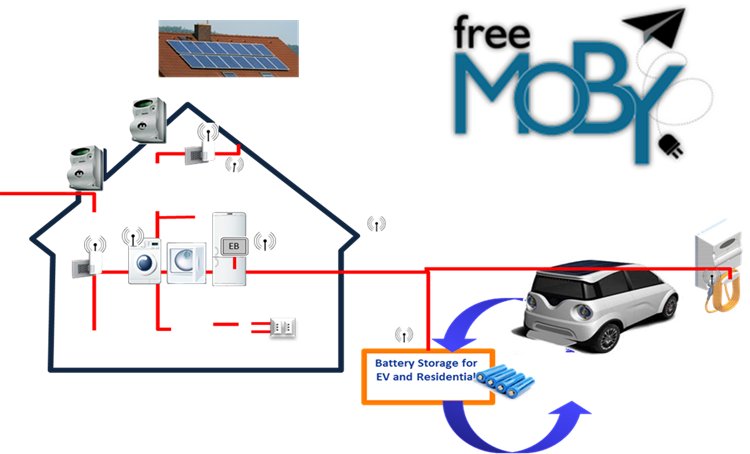The first review meeting of Free-Moby project was held last December in Brussels. Free-Moby is a three years FP7 founded project focused on the implementation of easy to deploy micro fully electrical vehicles and city EVs.
Figure 1: Schedule of the Vehicle to Home (V2H) connection and communication to optimize the performance of the harvested energy.
All the partners involved in the activities developed during the first twelve months of the project were present in the meeting. Cidaut presented the results of the “Preliminary market study for premium vehicles”, where the new trends in the demands of the consumer for the electric vehicles have been analyzed. The evolution of the characteristics of premium vehicles has been studied, how the comfort and the reliability have given the leading role to the passive and active safety and how nowadays the entertainment and the information are growing in importance for the new customers. Most of the premium characteristics are related to the connection of the vehicle so a deep analysis of the way this connection works has been made.
Cidaut also presented the results on the evolution of the smart charging technology. Free-Moby promotes the integration of renewable energies in electromobility through the installation of photovoltaic panels at home and on the vehicle. One of the targets of the project is to optimize the performance of the harvested energy. The solution found in Free-Moby project consists on the combination of DC-DC charging and a partial swapping. The innovation introduced in the case of the DC-DC conductive charging is to use a compact high performance charger outside the vehicle. This solution is possible thanks to the development of a high efficient rack compatible for vehicle and home use. This rack is composed by four battery modules that can be easily removed for partial swapping allowing a high degree of interaction between home and vehicle. The batteries charged at home with solar energy can be used for electromobility applications and the vehicle can be plug to the home in emergency cases. In order to achieve this integration, the empowerment of the communication has been highlighted as crucial. During first year important research has been made on communication inside the vehicle and also on vehicle to everything.
